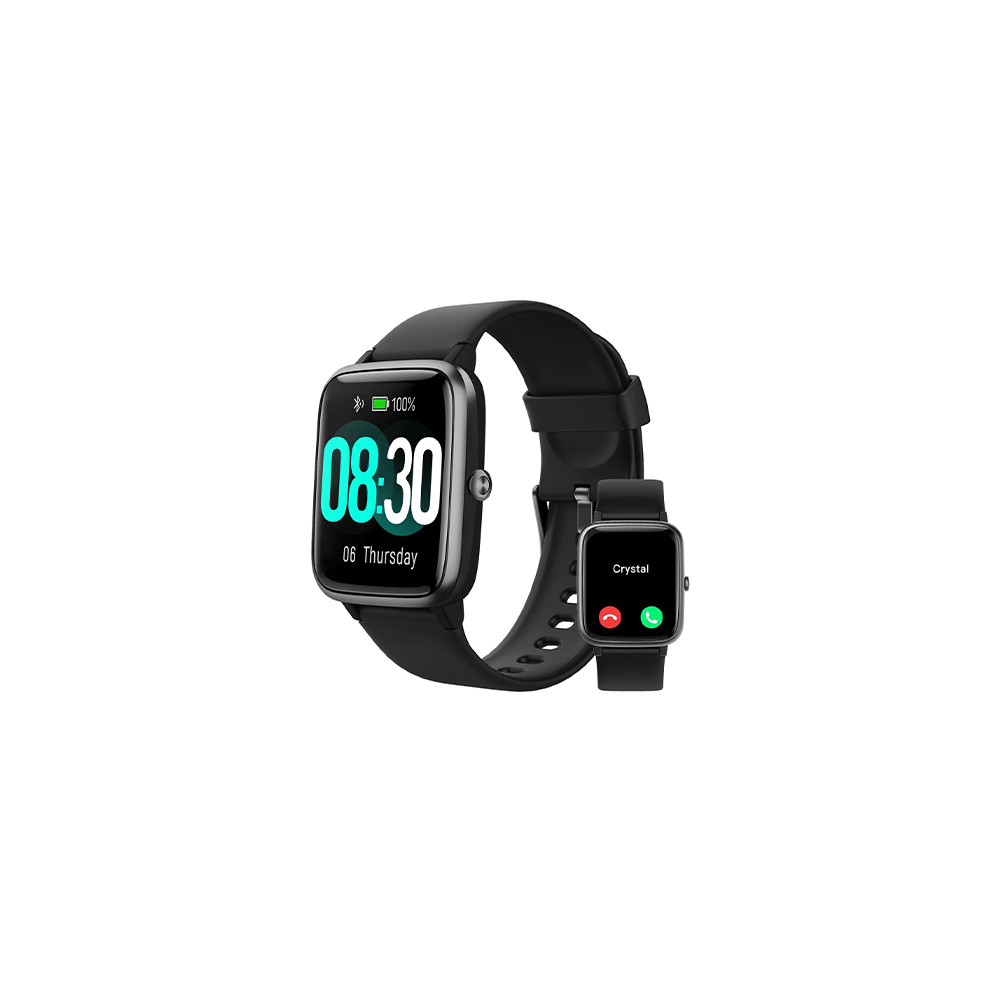
Welcome to our post on the top 6 accelerometer sensors for smooth motion tracking! In this article, we’ll explore the features of the best accelerometers. We’ll also look at their capabilities. They are the most reliable sensors in the market. Are you working on a project that needs precise motion measurement? Or, are you looking to improve your device’s motion tracking? This list will help you choose well. Let’s dive in and discover the best accelerometer sensors for your needs.
Adafruit ADXL335 Triple-axis Accelerometer
The Adafruit ADXL335-5V Ready Triple-axis Accelerometer works well. It comes fully assembled and tested. It has a 50 Hz bandwidth. It features XYZ filter capacitors for precise measurements. Users have found it easy to set up for projects like fall detection. They provide decent resolution and response. You need minimal coding. Some have mentioned price concerns. But, it’s a dependable choice for various uses.
HiLetgo 3-Axis MPU6050 Sensor Module
The HiLetgo 3pcs GY-521 MPU-6050 MPU6050 Module offers precise 6-axis sensing. It has an accelerometer and gyroscope. The chip has a 16-bit A/D converter and data output. The module provides gyroscopes with ranges of ±250, ±500, ±1000, and ±2000 degrees per second. It also provides accelerometers with ranges of ±2g, ±4g, ±8g, and ±16g. Users have used this module for many projects. These range from controlling 3D rotations to logging acceleration data. Setting it up is a bit hard. But, once set up, it works well. It is a great value at $10 for a set of 3. It’s a reliable tool. It’s for both beginners and experienced users. They want low-cost sensor solutions for Arduino projects.
Samsung Fit 2 Smart Band
The Samsung Galaxy Fit 2 2020 is a black Bluetooth Fitness Tracking Smart Band. It has reliable fitness tracking. These include heart rate monitoring and sleep detection. Users have praised its comfy rubber band and long battery life. One customer reported over two weeks on a single charge. Some found small inaccuracies in step counting. But, many like its seamless integration with Samsung devices. That makes it a great value for its price. If you want a simple fitness band that focuses on the basics, the Samsung Galaxy Fit 2 could be a smart choice for you. Find motivation to stay active and keep an eye on your health with this sleek and affordable smart band.
GRV Smart Watch for iOS/Android Phones
The GRV Smart Watch for iOS and Android phones offers a wide array of features for a great value. It works with most smartphones. You can use it to answer/make calls and get notifications on the watch. It has 100+ sport modes. It also has accurate fitness tracking. It tracks heart rate, blood oxygen, and sleep. This smartwatch is a complete health companion. It also has customizable watch faces. It has an IP68 waterproof rating. It has practical features, like alarm clocks and music control, and more. It has an affordable price. This makes it a great gift for friends and family. They want to stay active and healthy.
This smartwatch has received rave reviews. Reviewers love its long battery life, accurate fitness tracking, and handy features. These include phone notifications, heart rate monitoring, and customizable watch faces. Users have praised its low cost compared to big-name brands. It still offers a comparable performance. It’s great for tracking step count, sleep quality, and heart rate. It also has extra features like a stopwatch, timer, and sedentary reminders. The find my watch and phone feature has also been a favorite among users. Overall, this smartwatch provides excellent value for its price.
WT901BLECL 9-axis Gyroscope+Accelerometer+Inclinometer
Get fast data with the Bluetooth 5.0 Accelerometer+Inclinometer WT901BLECL MPU9250 sensor. It gives precise 3-axis XYZ measurements for acceleration, gyro, angle, and magnetic fields. It works within a 50-meter Bluetooth range. Enjoy up to 10 hours of battery life. It uses low-power Bluetooth 5.0. It works with Android smartphones and Windows computers. Enjoy WitMotion’s 8-year expertise in Attitude Measuring Solutions. They provide steady output and low bias. They also offer better accuracy with Kalman Filtering. The device includes a Type-C interface, cable, and a welcome guide. Plus, receive worry-free support with a 12-month warranty and lifetime friendly customer service.
Customers have found the product ideal for many uses. These range from robotics to testing motorcycles. Some users had connectivity issues. Skilled help stabilized them promptly. They made sure the experience was seamless. Users leveraged the device’s light weight and excellent docs. They used it to do many tasks well. For example, they monitored vibrations in vehicles and captured motion data for analysis.
WT9011DCL 9-axis Gyroscope Sensor
This Bluetooth 5.0 Accelerometer+Inclinometer WT9011DCL MPU9250 is a high-performance device. It offers precise 3-axis XYZ acceleration, gyro, angle, and magnetic field data. It has a sturdy design. It has low-consumption Bluetooth 5.0 for about 10 hours of battery life. It works with Android smartphones and Windows computers. WITMOTION developed the sensor. It is an 8-year expert in attitude measuring solutions. The sensor uses dynamic fusion algorithms. It uses Kalman Filtering for stable and accurate data. It has a 12-month warranty and lifetime support. This sensor is great for tasks like leveling tools. It’s also good for bellows and audio. It’s good for measuring changes in acceleration of transducers.
Customer reviews have praised the device. They like its small size and long battery life. They also like its easy connectivity and flexible software. Some users had initial issues with software detection and connectivity. But, customers have praised the helpful service. They also like the product updates from the WITMOTION team. They greatly improved the sensor’s experience and functionality.
Similar sensor options
Understanding Accelerometers: How They Function
Top accelerometer sensor brands
Choosing the Right Accelerometer Sensor for Your Needs
- Accuracy: Check the accuracy of the sensor in measuring acceleration. Look for sensors with high accuracy to ensure precise data collection
- Range: Consider the range of acceleration values that the sensor can measure. Choose a sensor with a range suitable for your specific application to capture all the data you need
- Interface: Check the sensor’s interface options. They connect to your microcontroller or data system. Common interfaces include I2C, SPI, or analog output. Make sure the sensor’s interface works with your setup. It should integrate well.
Common Questions About Accelerometer Sensors
MEMS accelerometers have several advantages. This is because they are small, cheap, and sensitive. These sensors can measure acceleration accurately. They can also detect changes in motion. This makes them great for many uses, like in cars, phones, wearables, and machines. Additionally, MEMS accelerometers use low power. They are robust and provide real-time data for monitoring and control. Overall, using a MEMS accelerometer sensor has many advantages. It offers precise measurements. It is also cost-effective and versatile in various fields.
To perform calibration on an accelerometer sensor, you will need to follow these general steps:
- Use a stable and level surface to place the accelerometer.
- Connect the accelerometer to a calibration device or software. It can apply known acceleration values.
- Apply a known acceleration value to the accelerometer in each of the three axes (X, Y, and Z).
- Compare the output readings from the accelerometer with the known values.
- Adjust the accelerometer’s calibration settings. Do this until the output readings match the known values well.
- Repeat the process if needed to ensure accuracy on all axes. Calibrating your accelerometer makes measurements accurate and reliable.
Sure, an accelerometer measures the forces that speed up an object. It contains a moving mass that responds to acceleration. This movement becomes an electrical signal. It can be used to measure the acceleration. It is commonly used in smartphones, wearables, and other devices. It detects changes in orientation, tilt, and vibration.
One can use an accelerometer sensor for gesture recognition. It measures changes in acceleration to detect specific movements or gestures. The sensor can track how an object is being moved or oriented in space. This lets it recognize gestures like shaking, tapping, rotating, or waving. By analyzing the sensor’s acceleration data, algorithms can interpret these gestures. They can then trigger specific actions or commands in a device or application. Companies commonly use this technology in smartphones, wearables, and gaming devices. It enables intuitive gesture-based interactions.
The noise of accelerometer sensors depends on their amplitude and frequency makeup. Amplitude is the noise’s intensity. Frequency content is the range of frequencies in the noise. Good accelerometers have low noise. This is crucial for accurate measurements in many uses. Manufacturers often provide specifications. They give numbers like noise density or noise floor to measure sensor noise.
Accelerometer sensors can measure frequency ranges based on their design and intended use. These accelerometers are common in consumer devices. They measure frequencies spanning 1 kHz to 10 kHz ranges. Industry or research uses high-performance accelerometers. They can have higher max frequency ranges, up to tens or hundreds of kHz. You must check the specs of the accelerometer model you want. They will tell you its max frequency range.
An accelerometer measures linear acceleration, including gravity, in three axes: X, Y, and Z. It detects changes in speed and position. But, a gyroscope sensor measures how fast something is spinning. It measures this around the three axes. An accelerometer senses shifts in position and angle. A gyroscope detects rotation or twist. Both sensors are often used together. They are used in devices like smartphones to provide better motion sensing.
An accelerometer sensor’s operating temperature range depends on its model and maker. Most accelerometers work from -40°C to 85°C. You need to check the datasheet for the range. Use the sensor with precision to achieve reliable results.













 Home
Home  Whishlist
Whishlist  Compare
Compare  Blog
Blog
Looking forward to seeing the comparison between different sensors.
Hoping to understand more about the technical specifications behind these sensors.
Looking for recommendations for implementing smooth motion tracking using these sensors.
I wonder if they will discuss the accuracy of these sensors.
Curious to know if the price plays a big factor in choosing a sensor.
Excited to learn about the top accelerometer sensors!
Hope they mention any real-world applications these sensors excel in.
Would love to read about any new advancements in accelerometer sensor technology.
Interested to see if they recommend any specific sensor for certain activities.